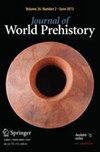Approaches to Interpreting Mesolithic Mobility and Settlement in Britain and Ireland
IF 3.1
1区 历史学
Q1 ANTHROPOLOGY
引用次数: 14
Abstract
The Mesolithic communities of northwest Europe have generally been considered inherently mobile, and all the material evidence associated with them has been interpreted accordingly. This has resulted in entrenched, theoretically polemical and largely hypothetical mobility models, focusing on seasonal rounds and extraction activities. However, recent reanalyses of the ethnographic sources, and discoveries of both substantial and ephemeral Mesolithic structures, as well as new data from recent innovative lithic and scientific analyses (including DNA, isotope research on human remains, and geochemical analyses of lithic artefacts), have forced us to rethink the rather static models of Mesolithic mobility strategies. This paper, examining Mesolithic hunter-gatherer mobility and settlement models from Britain and Ireland, is part of that reassessment. In particular, it assesses the impact of the multiple lines of consilience on our understanding of Mesolithic habitation of landscapes. These include the archaeological evidence and the efficacy of recent theoretical and methodological approaches that have been employed to interpret it.解释不列颠和爱尔兰中石器时代迁移和定居的方法
欧洲西北部的中石器时代社区通常被认为具有固有的流动性,所有与他们相关的物证都被据此解释。这导致了根深蒂固的、理论上有争议的、很大程度上是假设性的流动模式,侧重于季节性轮次和提取活动。然而,最近对人种学资料的重新分析,以及大量和短暂的中石器时代结构的发现,以及来自最近创新的石器和科学分析的新数据(包括DNA、人类遗骸的同位素研究和石器人工制品的地球化学分析),迫使我们重新思考中石器时代迁移策略的静态模型。这篇论文是重新评估的一部分,研究了中石器时代英国和爱尔兰狩猎采集者的迁移和定居模式。特别是,它评估了对我们对中石器时代景观居住的理解的多重一致性线的影响。这些包括考古证据,以及最近用来解释它的理论和方法方法的有效性。
本文章由计算机程序翻译,如有差异,请以英文原文为准。
求助全文
约1分钟内获得全文
求助全文
来源期刊

Journal of World Prehistory
Multiple-
CiteScore
5.30
自引率
0.00%
发文量
8
期刊介绍:
Aims and scopeJournal of World Prehistory is an international forum for the publication of peer-reviewed, original treatments of the prehistory of an area or larger region. It was founded nearly thirty years ago with the remit of providing researchers, instructors and students with timely and authoritative research syntheses from all fields of archaeology. Journal of World Prehistory continues to lead in this field. Our classic articles may be 20,000 or 25,000 words long, as appropriate (excluding their extensive bibliographies). Since 2008 they have been joined by shorter (around 10,000 words), position pieces, which provide in-depth, thoughtful development of data and concepts, including interventions in controversies that unfold in our pages. These, written in a fashion interesting and accessible to all archaeologists, are often paired with a longer treatment in a single volume. In addition, readers now benefit from thematic special issues and double issues, in which a number of leading authors deal with a key theme in world prehistory, such as the origins of metallurgy (2009, volumes 22: 3 and 4), or the East Asian Neolithic (2013, in preparation). All papers are available first online, followed by the print edition. We aim to be truly global in coverage, with recent articles dealing, inter alia, with Amazonian lithics, the late Jomon of Hokkaido, the Bronze Age in Southeast Asia, the Neanderthal settlement of Doggerland, Neolithic networks in Western Asia, younger Dryas Paleo-Indian adaptations, and state formation in the Horn of Africa. Articles benefit from multi-language abstracts where appropriate, and we work closely with authors who do not have English as a first language to present major syntheses in a clear and concise way to an international audience. Traditionally, JWP focuses on earlier periods, but it includes the beginnings and early development of complex societies, and our understanding of ‘prehistory’ is broad and inclusive: for guidance on chronological scope, as well as our calendrical conventions, see the editorial article ‘Prehistory vs. Archaeology: terms of Engagement’ http://www.springerlink.com/content/346142p032604447/ Our unique remit means that we do not encourage the submission of unsolicited papers; rather, specific proposals are encouraged and then guided prior to independent peer review. Our aims and the way we fulfil them, with close contact with authors throughout the publication process, mean that JWP is not a venue for the simple and rapid dissemination of new results. Whilst we expect scholarship to be current, with syntheses including much new data, our readers look to us for definitive area/period coverage that will have continuing value.If you are proposing an article or special theme for Journal of World Prehistory, please read the Instructions for authors.Rated ''A'' in the European Reference Index for the Humanities (ERIH)?Journal of World Prehistory is rated ''A'' in the ERIH, a new reference index that aims to help evenly access the scientific quality of Humanities research output. For more information visit http://www.esf.org/research-areas/humanities/activities/research-infrastructures.htmlRated ''A'' in the Australian Research Council Humanities and Creative Arts Journal List. For more information, visit: http://www.arc.gov.au/era/journal_list_dev.htm
 求助内容:
求助内容: 应助结果提醒方式:
应助结果提醒方式:


